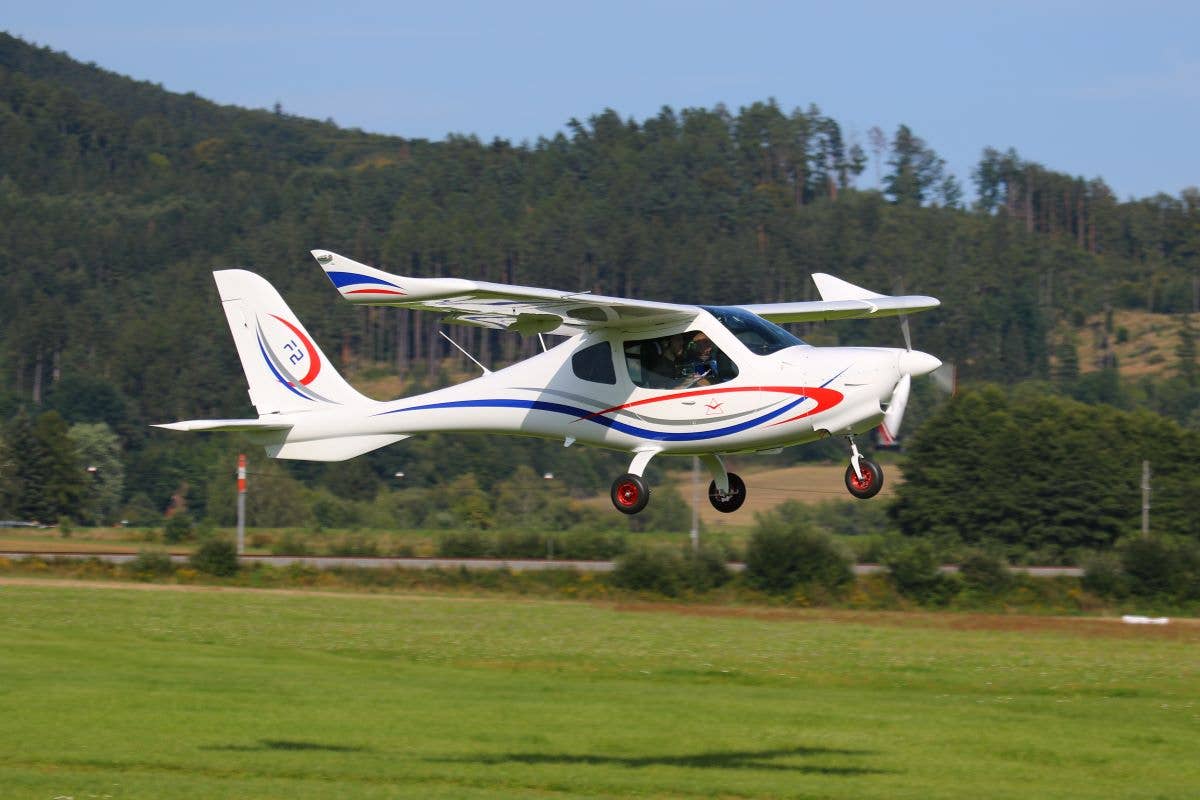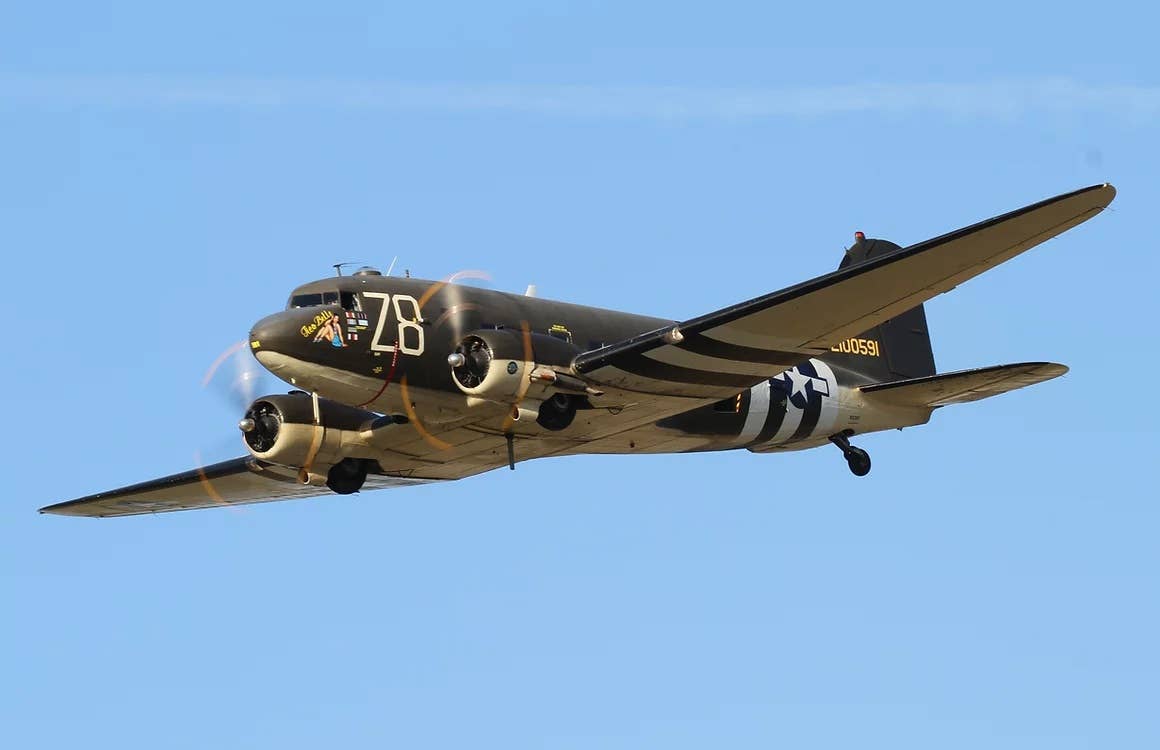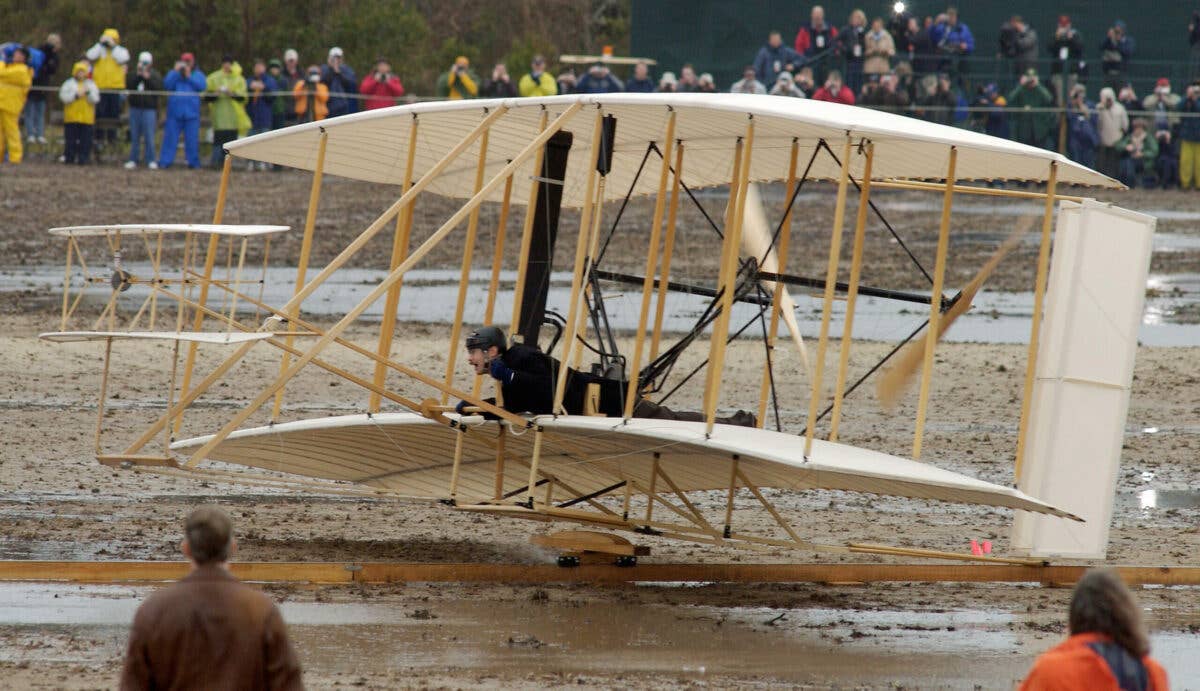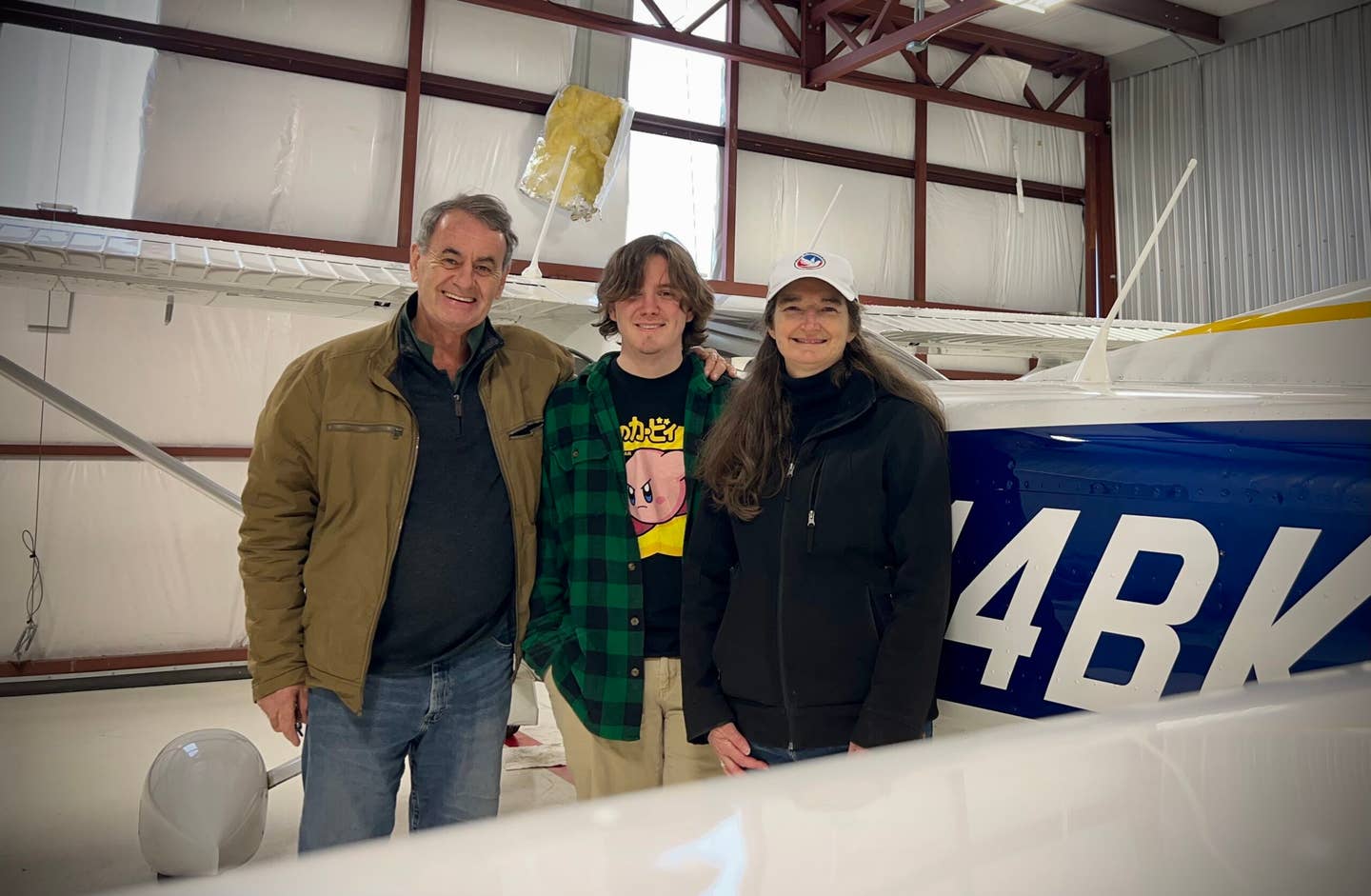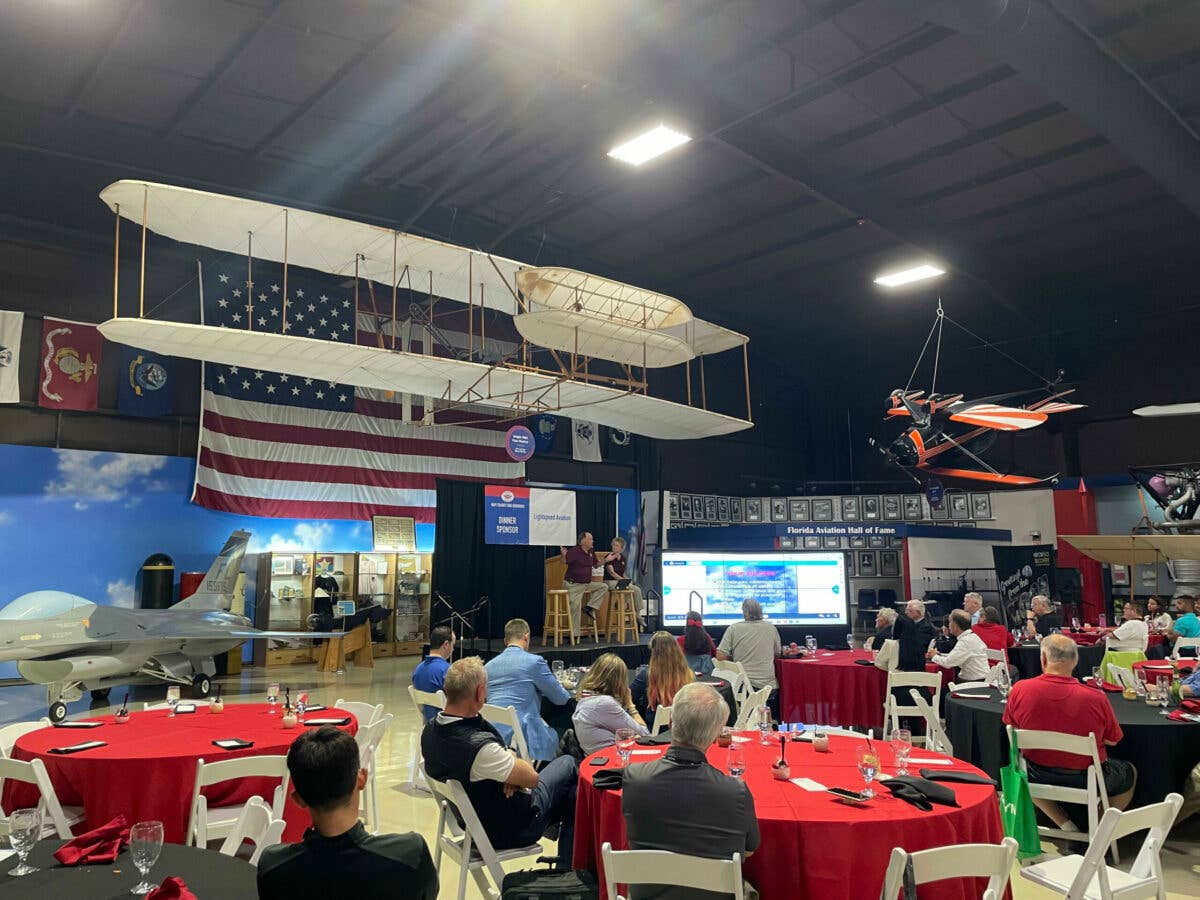Good FLYING Reads: Pinning on Wings of Gold
The first female U.S. Navy pilots form a fascinating subject for author Beverly Weintraub.
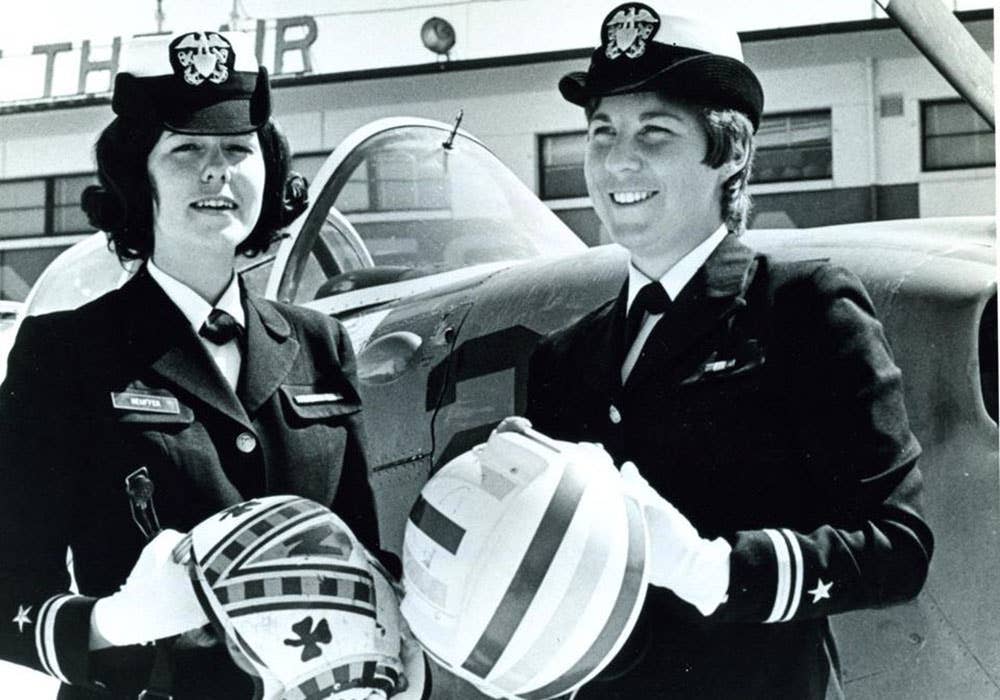
Barbara Ann Allen (right with Judith Ann Neuffer) was the first to receive her “Wings of Gold” on February 22, 1974. [Courtesy: U.S. Navy]
Though the U.S. armed services have drawn strength from the contributions of women since their respective beginnings, immediately after World War II, there were limited opportunities for women to serve in uniform—and none to fly as their brothers did.
Until Admiral Elmo R. Zumwalt rose to the top of the U.S. Navy, there was little reason to bring into the ranks the social change unfolding around the country during the 1960s and ’70s—except Zumwalt had a crisis of morale to confront, and a personnel shortage. Re-enlistment was at a low point, as was the incentive to join up once the draft ended.
In Wings of Gold: The Story of the First Women Naval Aviators, Pulitzer Prize-winning author Beverly Weintraub outlines just how Zumwalt’s mission to create a better Navy led him to foster policies intended to weed out racism and other ills in his command. Those initiatives also led to the first class of women to train as naval aviators.
‘Equal Rights and Opportunities’
Zumwalt’s specific call to action came in the form of a missive titled “Equal Rights and Opportunities for Women in the Navy” in August 1972, and it proposed how opening up “challenging billets” to women within the service would spark needed improvement. Though the first billets approved didn’t involve flying, just two months later in October, naval flight training was added to the list.
Barbara Ann Allen, Judith Ann Neuffer, Jane Millen Skiles, Joellen Drag, Ana Maria Scott, and Rosemary Bryant Merims took the admiral up on his invitation. Allen would be the first to receive her “Wings of Gold”—the Navy pilot’s wings—on February 22, 1974.
Why Tell This Story?
Biographers know that the heavy lift of producing a book-length manuscript can only be accomplished when the author feels a connection to their subject. For Weintraub, the impetus to capture the story of the first female U.S. naval aviators came from an unexpected source.
“I've written several op-eds about women and aviation for the Washington Post at the request of a former New York Daily News colleague who's now an opinion editor there,” said Weintraub in an interview with FLYING.
“When the Navy did the first-ever all-woman missing man flyover at Capt. [Rosemary Merims Conaster] Mariner’s funeral, it made national headlines and my former colleague asked me to write [about it]. Several months later, an editor at Lyons Press [saw the piece, and] contacted me and asked if I was interested in writing a book based on the story. So it actually found me.
“But as I did the research and talked to the women and their families, I was taken with how each had a personal story that illustrated the larger changes going on in the military and in the nation at large, and how they, in turn, undertook actions large and small to make change happen—not necessarily for themselves, but for generations of women pilots who followed.”
Agents of Change Who Just Want to Fly
Looking into the stories of the six pilots prior to their selection, there was no master plan in anyone’s mind other than to simply perform the mission of a full U.S. naval aviator. And if they were good with remaining “an experiment”—and not taking on the full measure of duty—obtaining their pilots’ wings would have been enough.
But earning those wings was only the first step. Because women were still excluded from serving in combat roles, the first U.S. naval aviators were limited not only in the billets they could accept, but also effectively barred from promotion above a certain level. It was a simple fact: In order to advance in the Navy at the time, you had to go to sea—and virtually all of those opportunities took place on ships designated for combat.
Capt. Joellen Drag (now Oslund), for example, became the U.S. military’s first female helicopter pilot when she gained her wings on April 19, 1974. But an “unexpected roadblock” stood in her way. “Section 6015, banning women from combat, put any ship that could in theory engage in combat at any time off limits to women,” said Weintraub in Wings of Gold. “Flying to and from ships, however, was a primary job for navy helo pilots; Joellen was being evaluated by the same standards as her male colleagues for work she wasn’t allowed to do.
“The law was depriving her of the flight time she needed to advance, and depriving the navy of a qualified pilot.”
It took 19 years for the bills removing the combat exclusion to pass through Congress and other halls of government into reality. By April 1993, Oslund had already retired from the military—but for Rosemary Mariner, the opportunity to command VAQ-34 had come just a couple of years earlier. “The more people you have competing for jobs, the higher quality you’ll get,” Mariner said in an Associated Press article on April 28, 1993, “At Long Last, Rosie the Riveter Can Be a Top Gun.” If only one female naval aviator qualified for a combat slot, she would be satisfied, Mariner said in another piece.
The Legacy of Wings of Gold
Indeed, Mariner’s wish came true many, many times over, as women took advantage of the opportunity to serve alongside their brethren in every capacity possible. Eight of those women flew over Mariner’s funeral in that missing man formation as a tribute to her efforts and those of the women honored in Wings of Gold.
I was a high school senior when I completed my private pilot certificate in 1988, and a close family friend and U.S. Air Force veteran talked with me about applying for a slot at the U.S. Air Force Academy.
I knew that I would have considered an air force berth if I could be a pilot—though the roles were still limited at that point. In fact, the USAFA had only graduated its first class eight years earlier. I recall weighing my options, and my eyesight—which was not 20/20 uncorrected—would have excluded me from an air force pilot slot (though I would have no problem flying with it in the civilian world). I was disappointed, because flying a C-130 sounded like an incredible mission.
By the time I would have graduated from the Academy, Section 6015 was gone—and I could have indeed stepped up to the jets if I made the cut. The USAF daydream that I still entertain lives on in young women now thanks to the work done by the class of navy and air force pilots who paved the way.
A YouTube video the Navy put together talking to the flyover pilots, showing the flyover at the end.

Sign-up for newsletters & special offers!
Get the latest FLYING stories & special offers delivered directly to your inbox

